
Dealing with payment fraud can feel like a minefield, but getting a handle on credit card fraud investigations is a must-have skill for any online merchant. Think of it as a proactive process—you're examining suspicious orders to confirm they're legitimate, effectively stopping fraud in its tracks before it eats into your revenue, triggers chargebacks, and hurts your hard-earned reputation.
Why Credit Card Fraud Investigations Matter More Than Ever
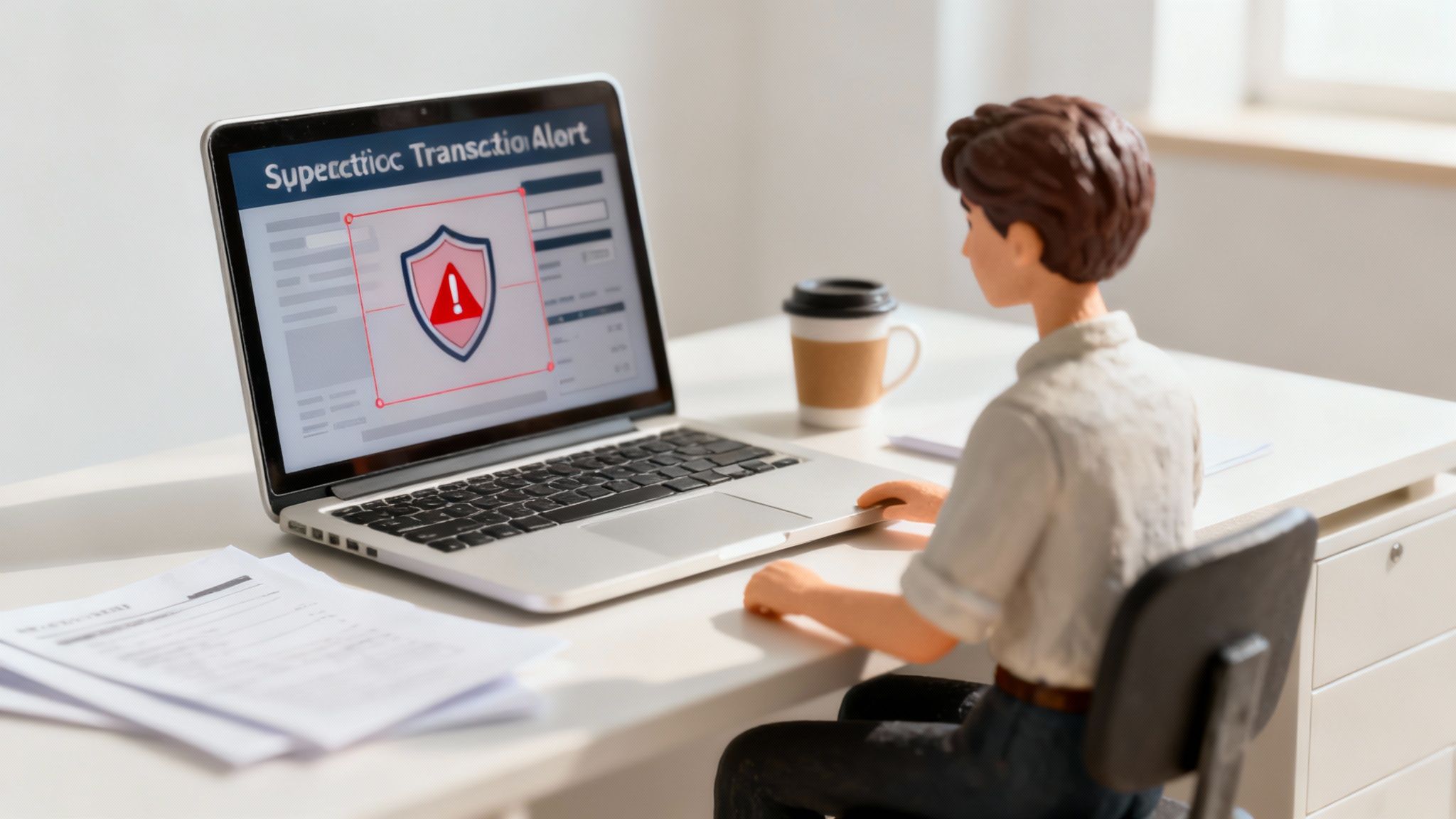
For anyone running an e-commerce store, ignoring the red flags of a sketchy order isn't just a risk—it's a guaranteed expense. Every fraudulent transaction that sneaks past your defenses is a potential chargeback, and that opens up a whole new can of worms beyond just losing the sale.
This isn't about scaring you with big stats; it's about the very real impact on your bottom line. Those costs pile up faster than you'd think.
The True Cost of Ignoring Fraud
When you process a fraudulent order, you're out more than just the product and shipping costs. You also get dinged with non-refundable processing fees and, almost certainly, a chargeback.
That’s a direct hit to your revenue. On top of that, every single chargeback comes with a penalty fee from your payment processor. If you want to get into the details, you can learn more about how chargeback fees work and why they’re so damaging. These fees can sting, ranging anywhere from $15 to over $100 per incident, turning even a small bogus sale into a significant financial headache.
Tackling fraud head-on isn't just a defensive move; it's a core part of running your business. A proactive approach turns you from a potential victim into a defender of your own revenue and brand integrity.
Protecting Your Brand and Your Business
Beyond the immediate cash loss, unchecked fraud can tarnish your reputation with customers and payment processors alike. A high chargeback rate puts your merchant account in jeopardy, which can lead to steeper processing fees or, in a worst-case scenario, having your account shut down completely.
It’s a massive issue. Credit card fraud is one of the most common types of identity theft on the planet. The Federal Trade Commission logged over 449,000 reports of this crime, an 8% jump from the previous year. That number alone shows just how widespread the problem has become.
Having a solid investigation process in place signals that you take security seriously. It builds trust, helps ensure your business can operate without a hitch, and—with the right tools—turns a frustrating manual task into an efficient, automated workflow.
Spotting Red Flags Before a Transaction Becomes a Problem
The best credit card fraud investigations are the ones you never have to start. Honestly, the most effective way to protect your business is to sharpen your instincts and learn how to spot trouble before it escalates into a full-blown chargeback. It’s all about looking past the obvious and recognizing the subtle, often interconnected, patterns that signal a fraudulent order.
Think of yourself as a detective for your own store. A single odd detail might not mean much on its own, but when several clues appear together, that's your cue to pay closer attention. You're searching for behaviors and data points that just don't add up for a typical, legitimate customer.
Common Transactional Red Flags
Fraudsters, despite their best efforts, often leave a trail of digital breadcrumbs. While one of these signs in isolation might be a simple mistake or a unique circumstance, a combination of them should immediately make you suspicious.
Here are some of the classic indicators I see all the time:
- Mismatched Details: The billing and shipping addresses are in completely different states or even countries. Digging a little deeper, you might find the customer's IP address is nowhere near either of those locations. That's a huge warning sign.
- Unusual Order Sizes: A brand-new customer, with zero purchase history, suddenly places an exceptionally large order. This is especially true for high-demand products like the latest electronics or sneakers. It's a classic tactic for fraudsters looking to max out a stolen card before it’s reported.
- Rapid-Fire Attempts: You see multiple failed payment attempts from the same IP address using different credit cards in a very short time. This is a tell-tale sign that someone is cycling through a list of stolen card numbers, hoping one will go through.
Reading Between the Lines
Here’s where experience comes in: context is everything. An order shipping to a different address could just be a gift. But what if that gift order is also for an unusually large amount, uses a brand-new, slightly strange-looking email address, and requests the most expensive expedited shipping? Now the picture looks very different.
It’s the combination of red flags that paints a high-risk picture.
The goal isn't to block every slightly unusual order. It's to know when to pause and verify the ones that present multiple warning signs. Taking that extra moment can save you from a guaranteed chargeback down the road.
To help you get a better handle on this, I've put together a quick-reference table. Think of it as a cheat sheet for assessing risk on the fly.
Common Fraud Indicators and Recommended Actions
This table should give you a solid framework, but remember that fraud patterns are always changing.
Manually checking every single order for these patterns can be a massive time sink, which is where modern tools can be a lifesaver. AI-driven platforms can analyze hundreds of data points in real time, doing the heavy lifting for you. They automatically flag high-risk orders, allowing your team to focus their investigation efforts where they’re truly needed. This is a critical piece of effective transaction monitoring, helping you stop fraud before the package even leaves your warehouse.
For those looking to get even more sophisticated, it’s worth exploring how predictive analytics in banking are used to spot suspicious patterns. Many of those same principles can be applied to protect your e-commerce store from ever-evolving threats.
Your Playbook for Investigating a Suspicious Order
So, your fraud filter just flagged an order. What now? This isn't the time to panic; it’s time to follow a process. Having a clear, repeatable playbook for investigating credit card fraud is what separates the merchants who lose money from those who protect it. Your goal is to quickly build a complete picture of the transaction so you can confidently decide whether to approve it or shut it down.
This whole process is about gathering the essential data points. You’re not just looking at one piece of information in a vacuum. Instead, you're connecting the dots between several key details to see if the story they tell actually makes sense.
This decision-making flow helps visualize the very first steps you should take when an order’s legitimacy is in question.
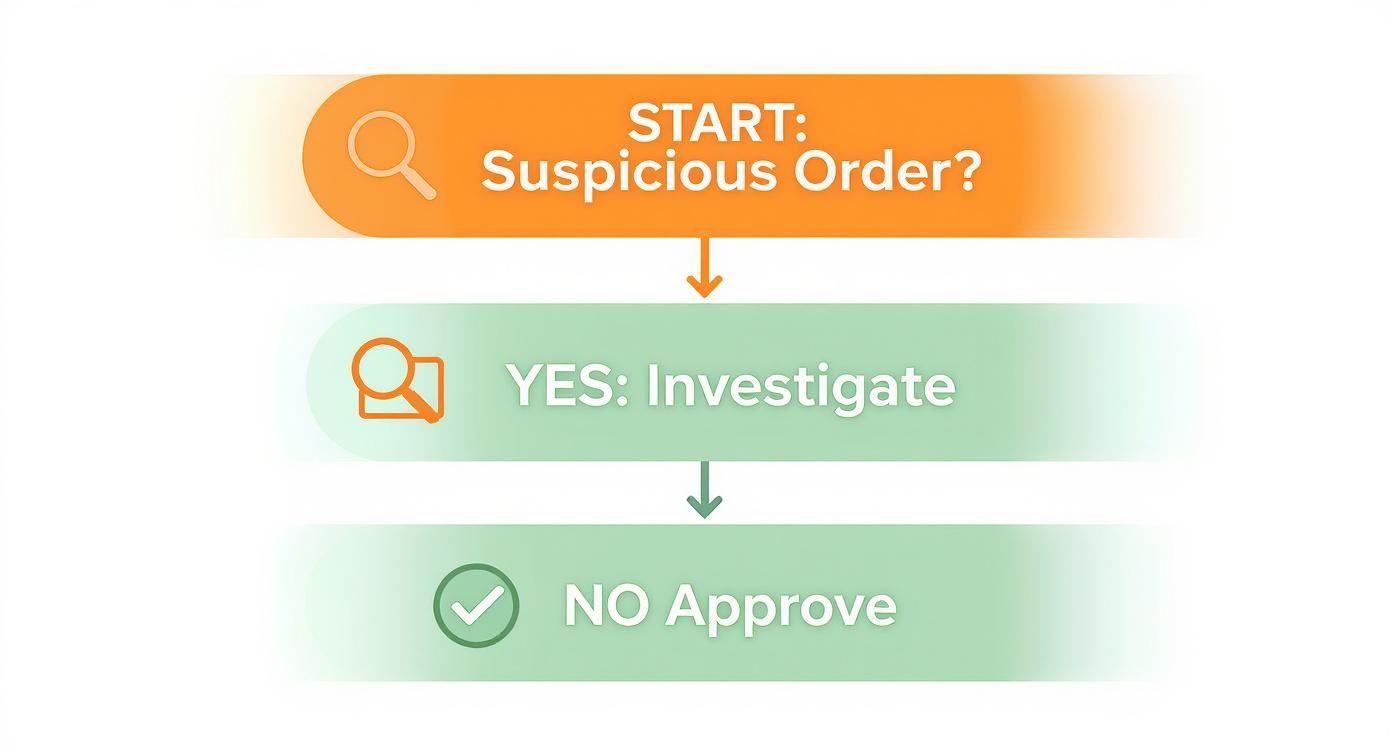
As the infographic shows, the immediate action after spotting a suspicious order is to investigate—not to just blindly approve or deny it.
Collecting the Core Evidence
Every investigation should kick off by examining the raw transactional data. Think of yourself as a detective, piecing together clues to verify the customer's identity and, more importantly, their intent.
Start with these fundamentals:
- IP Address Geolocation: Where in the world was this order actually placed? A quick IP lookup can tell you the city, state, and country. If the IP address is in Vietnam, but the billing and shipping addresses are both in Ohio, you've got a serious red flag that needs explaining.
- Device Fingerprinting: What kind of device was used to place the order? Fraudsters often rely on virtual machines or proxies to cover their tracks, and sophisticated fraud tools can sometimes spot these tell-tale signs.
- Order Details: Look beyond what was ordered and focus on how. Was the order placed using a sketchy, mashed-keyboard email like
fghj6543@email.com? Was expedited shipping requested for a very high-value item? These are classic behaviors in fraudulent purchases.
Cross-Referencing for Confirmation
Once you have your initial data, the next step is to cross-reference it against other information you can find. This is often where you can either confirm or completely debunk your suspicions.
Take a look at the customer’s purchase history with your store. Is this a loyal, long-time customer or a brand-new account making a massive first-time order? That context matters.
You can also do some simple, non-intrusive online digging. A quick search for the customer's name or email might lead to a social media profile that validates their location and identity. If all the details line up, you can feel much more confident in the order's legitimacy.
A key part of any credit card fraud investigation is creating a cohesive narrative. If the IP address, shipping location, and social media presence all point to the same person, you're likely dealing with a real customer. If they're all over the map, you’re right to be suspicious.
Today's fraudsters are getting more creative, too. They're now using a hybrid approach, combining old-school scams with AI-powered methods like deepfakes and synthetic identities. This blending of tactics is getting past many conventional defenses, exposing significant gaps in existing systems.
When to Reach Out to the Customer
If you’re still on the fence after your internal review, a carefully worded email or a quick phone call can be your best tool. The key here is to be tactful and avoid any hint of accusation.
Here’s a simple script you can adapt:
“Hi [Customer Name], thanks for your recent order! As part of a routine security check to protect our customers, we're just verifying a few details. Could you please confirm the billing address associated with your payment method? We really appreciate your help in keeping your account secure.”
A legitimate customer will usually be happy to help and will appreciate the diligence. A fraudster, on the other hand, will most likely go silent, confirming your suspicions. That gives you the green light to cancel the order and add them to a blocklist to prevent future attempts.
For a deeper dive, check out our guide on how to blacklist and block fraudulent buyers.
Building a Winning Case for a Chargeback Dispute
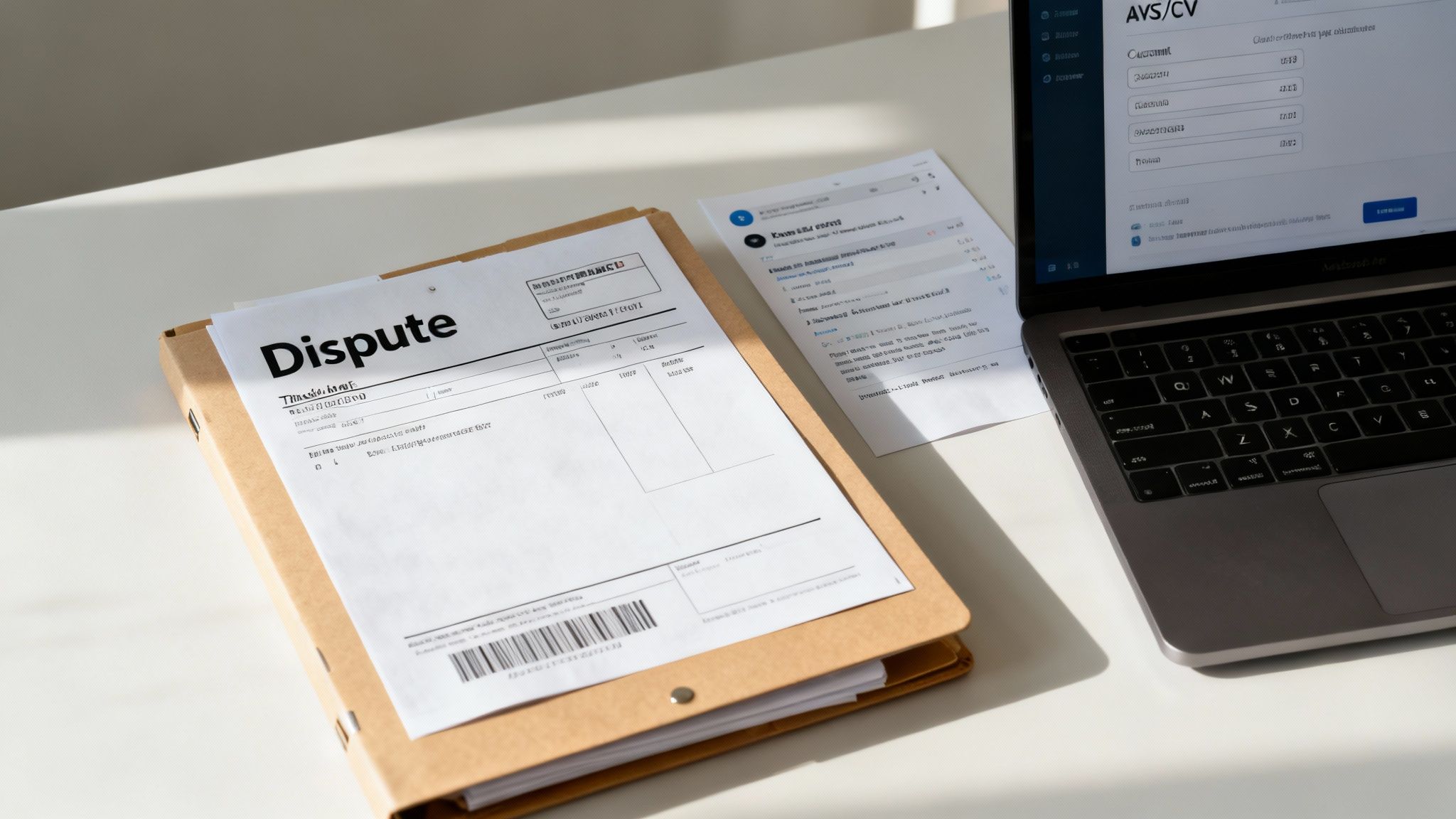
When that dreaded chargeback notification lands in your inbox, your first reaction is probably frustration. Let the next one be determination. In a credit card fraud investigation, solid, well-organized documentation is your single best weapon, turning a potential loss into a fight you can actually win.
Think of yourself as a detective building a case file. Your mission is to lay out a clear, logical, and evidence-backed story for the payment processor and the card-issuing bank. A messy, incomplete submission is an easy "no" from them. A compelling one? That dramatically improves your odds.
Gathering Your Core Evidence
Before you even think about writing a response, you need to pull together every crucial piece of evidence tied to that transaction. This isn't just about proving you shipped a product; it's about proving you delivered it to the legitimate cardholder.
Start by collecting these essentials:
- Customer Communications: Pull up every email, chat log, or support ticket related to the order. These are fantastic for establishing a timeline and showing a history of legitimate interaction.
- Proof of Delivery: This is your heavyweight evidence. Nothing beats a delivery confirmation with a tracking number that shows the item arrived at the cardholder's verified address.
- Transaction Authorizations: Don't forget the technical data. AVS (Address Verification System) and CVV (Card Verification Value) match responses are critical for showing you followed proper security procedures at checkout.
The foundation of any successful dispute is solid documentation. Learning about the importance of robust evidence can seriously strengthen your approach. Each piece you add makes your argument that much harder to ignore.
Crafting a Clear Narrative
Once you have your documents, you need to weave them into a story that makes sense. Don't just dump a folder of screenshots and expect the bank to connect the dots. You have to be the guide, walking them through the evidence and explaining why it proves the transaction was legitimate.
Let's take a simple scenario: A customer claims they never received a product. Your response should clearly present the order details, the AVS/CVV confirmation showing the card was properly used, and a screenshot from the carrier's website showing "Delivered" to the verified billing address. It's a simple, logical flow that's tough to argue against.
Your goal is to make it incredibly easy for the bank's reviewer to side with you. A well-structured dispute response that is clear, concise, and backed by undeniable proof is your best path to winning.
This isn't getting any easier. Global credit card fraud losses are projected to hit $43 billion by 2026, and reported cases are already 53% higher than they were before the pandemic. That's why having a robust defense strategy, built on meticulous case-building, is non-negotiable.
This manual process can be a huge time-sink, especially as your business grows. This is exactly where automated tools become a game-changer. Solutions like ChargePay can automatically gather all this compelling evidence for you—from AVS matches to delivery confirmations—and assemble it into a perfectly formatted response. It doesn't just save you countless hours; it ensures every dispute is fought with the strongest possible case.
For those looking to sharpen their skills, our guide on how to win a credit card dispute offers even more actionable strategies.
Turning Investigations into Smarter Fraud Prevention
Winning a chargeback dispute feels good, but let's be honest—it's a reactive victory. The real win in any credit card fraud investigation is turning that messy incident into solid intelligence that stops the next attack cold. Think of each fraudulent attempt as a free lesson, giving you a direct peek into the tactics fraudsters are using against your store right now.
Your long-term game plan shouldn't just be about fighting off individual disputes. It needs to be about building a smarter, more resilient defense system. This means taking the data from every single investigation and transforming it into actionable rules and tougher prevention measures.
From Reaction to Proactive Defense
Once you've confirmed an order is fraudulent, the initial steps are pretty straightforward but absolutely critical. First thing's first: process a full refund immediately to get the money back to the legitimate cardholder. It’s the right thing to do, and it definitely helps keep your relationship with payment processors on solid ground.
Next up, and just as important, is to blacklist the fraudster. This isn't complicated—it just means blocking the customer account, the email address, and any other unique identifiers you managed to grab. This one simple action makes it much harder for repeat offenders to come back and hit you again with a different stolen card.
These steps effectively close the loop on the current problem, but the most valuable part of the whole process is what comes next.
Analyzing Patterns to Strengthen Your Rules
The real gold is buried in the data you collected. Don't just file it away and forget it. It's time to get forensic. Look closely at the specific attributes of that fraudulent transaction.
- Was it the mismatched IP and shipping address?
- Did they use a high-risk or disposable email domain?
- Maybe they pushed through a high-value order with expedited shipping?
Every fraudulent order tells a story about a weakness in your current defenses. Your job is to listen to that story and use it to patch the holes, making your store a harder target for the next attacker.
By spotting these patterns, you can start fine-tuning your fraud prevention filters. For instance, you might decide to adjust your rules to automatically flag any future orders that share two or three of the red flags you just identified. This doesn't mean you have to automatically block all those orders, but it ensures they get a much closer look from a real person before anything gets shipped.
This continuous feedback loop is the very heart of an effective anti-fraud strategy. It’s an adaptive approach that evolves right alongside the tactics criminals are using. For merchants who want to put this entire process on autopilot, our complete guide to automated chargeback and dispute management using AI offers a deeper look into building a truly hands-off system.
Ultimately, this approach transforms each fraud attempt from a costly headache into a valuable piece of security intelligence. It’s how you finally move from constantly putting out fires to building a fortress that fraudsters learn to avoid altogether.
Frequently Asked Questions About Fraud Investigations
When you're running an e-commerce store, questions about credit card fraud are just part of the territory. It's a complex world, and getting straightforward answers can be the difference between protecting your revenue and losing it.
Let's break down some of the most common questions we hear from merchants and get you some practical, no-nonsense advice.
How Long Should a Credit Card Fraud Investigation Take?
Honestly, you need to be both thorough and quick. A manual investigation could take a few hours or stretch into a couple of days, depending on how deep you need to dig and how many data points you're checking. The real pressure is the clock—the longer you wait, the higher the odds of a customer filing a chargeback before you’ve even decided what to do.
The goal is to gather enough solid intel to confidently approve or deny the order without making a legitimate customer wait forever. This is where automation is a game-changer. A good tool can shrink that entire process down to just a few minutes, flagging sketchy orders and laying out all the evidence for you to make a quick, informed call.
What Is the Most Important Evidence in a Dispute?
If there's one piece of evidence that stands above all others, it's this: proof of delivery to the cardholder's verified address.
We're not just talking about any old tracking number. You need a tracking number from a major shipper that clearly shows the package was delivered to the exact address confirmed by your AVS (Address Verification System) check.
When you can hand that over to the bank—along with matching AVS and CVV results and an IP address that geographically lines up with the shipping location—you've built a rock-solid case. It becomes incredibly difficult for a bank to side with the cardholder in a "product not received" dispute when you have that combination.
Can I Contact a Customer if I Suspect Fraud?
You absolutely can, but you have to handle it with care. The last thing you want is to falsely accuse a good customer and lose their business forever. The key is to frame your outreach as a routine security check meant to protect them.
A simple, non-accusatory email can work wonders. Try something like this: "To ensure your account's security, we're just verifying the details of your recent purchase. Could you please confirm the billing address on file?" A real customer will often be grateful for the diligence. A fraudster? They'll usually just vanish into thin air.
When Should I Just Accept a Loss?
Look, fighting every single chargeback isn't always the smart play. For those super low-value orders, the time and energy you'll sink into investigating and fighting the dispute might actually cost you more than the item itself. Sometimes, it's just more efficient to take the hit.
But even when you don't fight, you should still document the incident and blacklist the user to stop them from hitting you again. For any order with a significant dollar value or a case where your evidence is undeniable, it's almost always worth the fight. Every dispute you win not only protects your revenue but also reinforces your credibility with your payment processor.
Handling credit card fraud investigations can feel like a full-time job, but it doesn't have to be. ChargePay uses AI to automate the entire dispute process, from gathering evidence to submitting winning responses, helping you recover lost revenue without lifting a finger. Reclaim your revenue effortlessly with ChargePay.
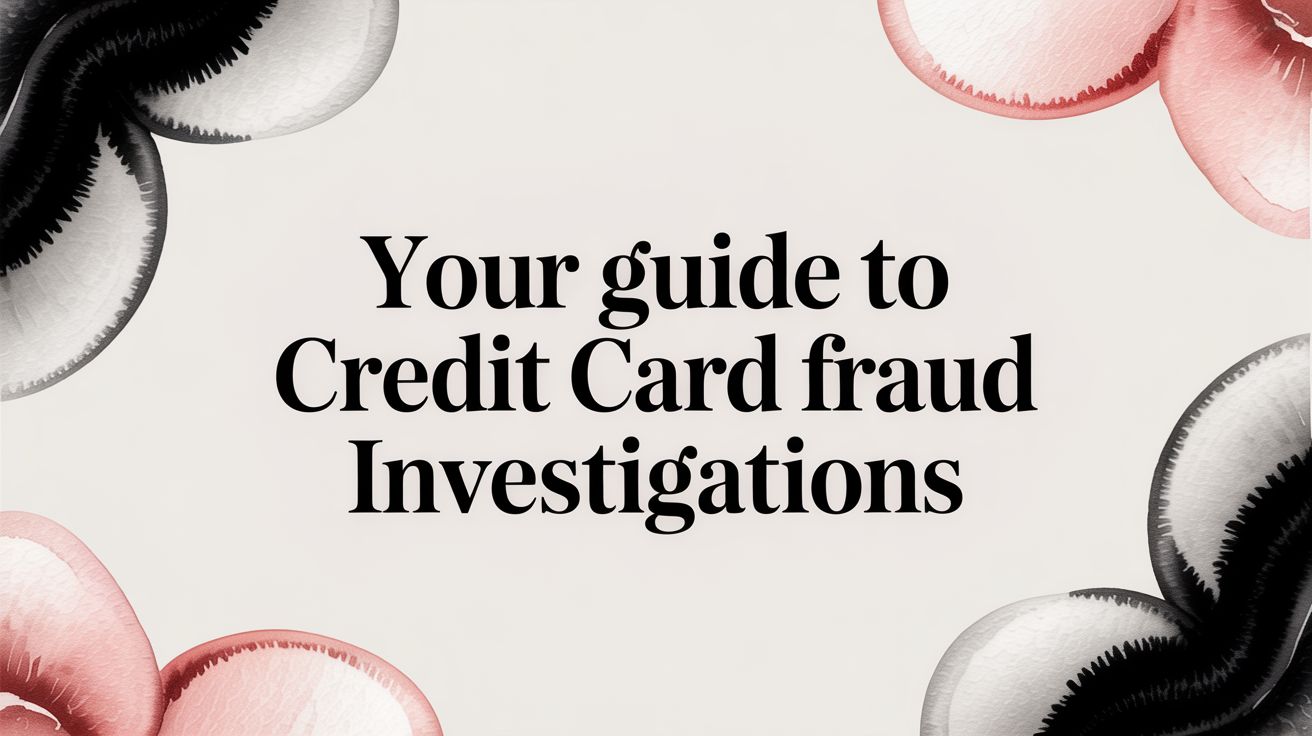


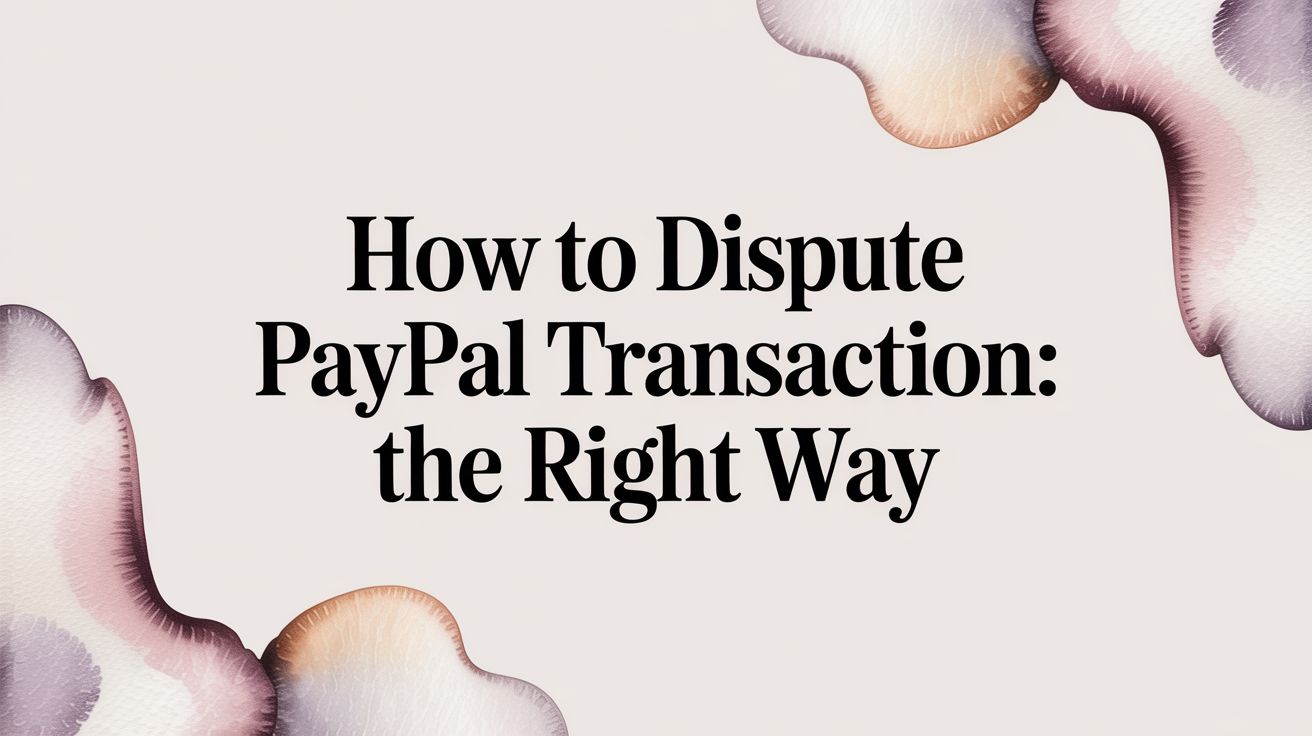
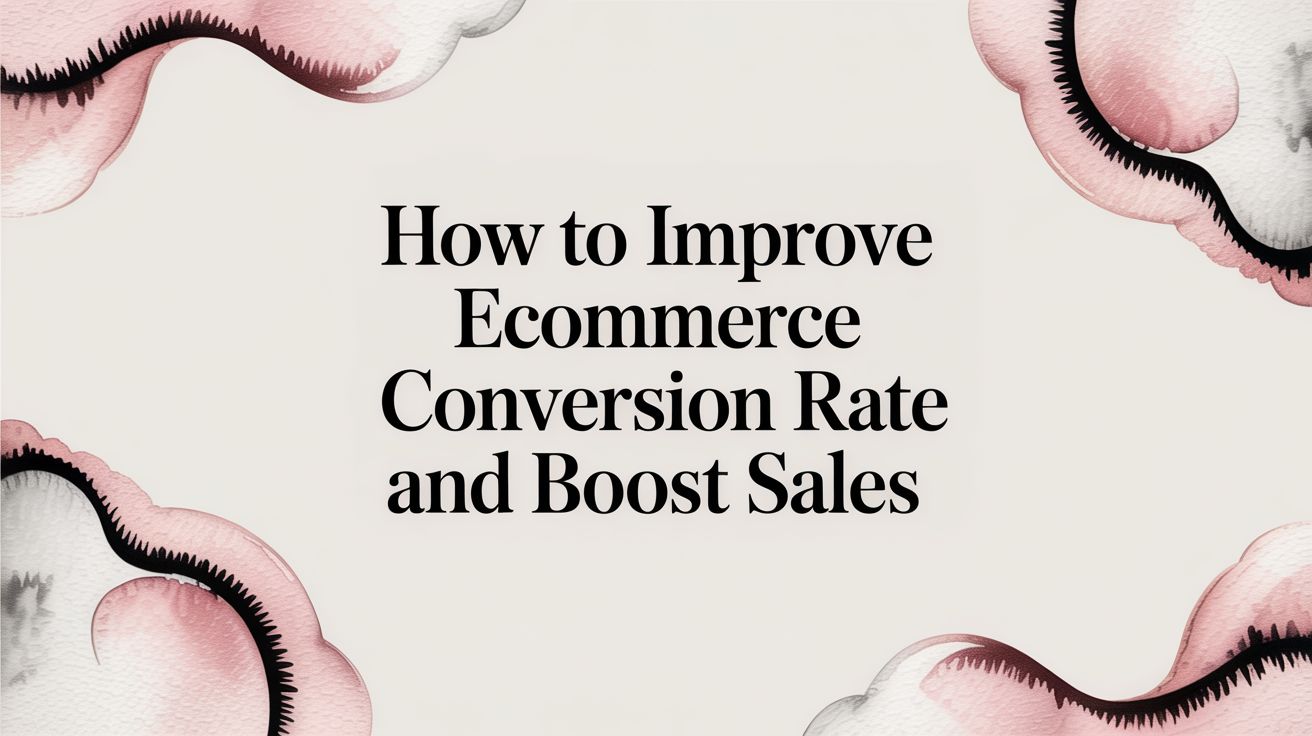
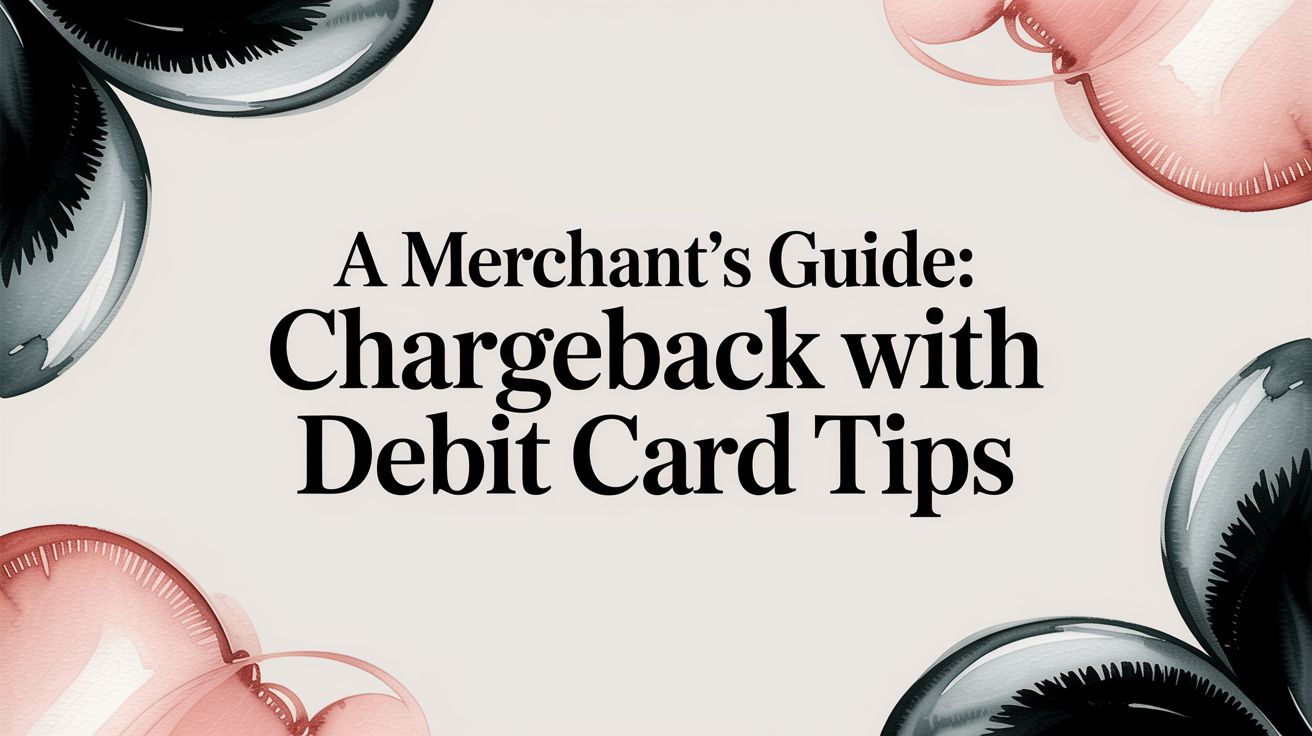

.svg)







.svg)
.svg)
.svg)